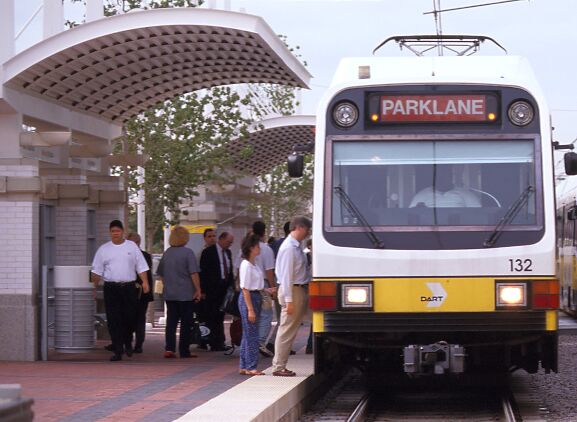
Light Rail Progress can be contacted at: Light Rail Progress |
Dallas's DART light rail transit (LRT) system continues to break even more records. The agency's vigorous LRT expansion program, accelerated by overwhelming voter approval of extra bond funding in 2000, is starting to pay off, bigtime, as LRT's weekday average ridership heads steeply upward. More than half a dozen new stations have opened, and the line has already reached Richardson (see Dallas Light Rail Opens First Stations Serving Suburban Cities). in July 2002, according to Dallas Area Rapid Transit, LRT was averaging 68,000 rider-trips a day. With two more stations, and the entire line to Garland, set to open on 18 November 2002, and the extension to Plano planned to open on 9 December, DART's LRT ridership is clearly heading towards the 70,000 level – nearly doubling the average weekday ridership of just two years ago. And, as the graph below indicates, that ridership (through 2000, the latest year reported by the FTA) was already on a sharply rising upward trend.
Transporting 70,000 daily rider-trips means that DART's LRT system, alone, is taking approximately 58,000 daily motor vehicle trips off the Dallas area's jammed freeways and streets. That's about 26,000 individual cars, SUVs, pickups, and other vehicles that aren't competing for parking spaces, especially in crowded, congested areas like central Dallas. And light rail is doing all that while lowering the cost of public transit mobility. As the graph below indicates, after initially extra-high startup operating costs (and very few passenger-miles) in the months of 1996 when LRT began service, the unit cost of LRT operations has plunged, to the point that it has consistently been significantly below the cost of operating DART's buses. Meanwhile, the operating cost of bus service has roughly stabilized.
DART's Light Rail Transit System
|
|||||||||||||||||||||
|
|
||||||||||||||||||||||